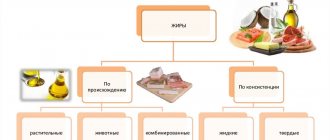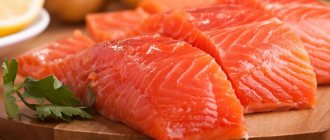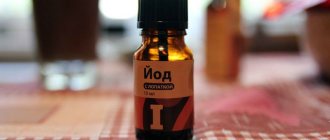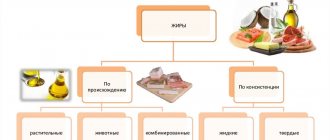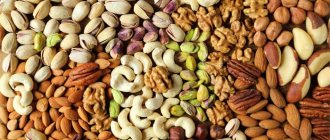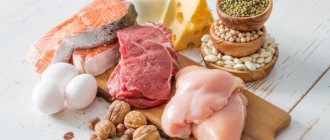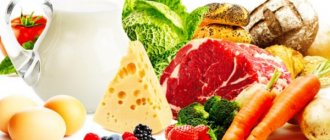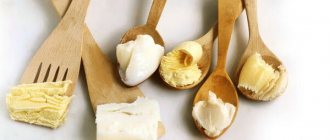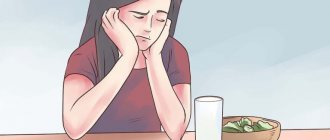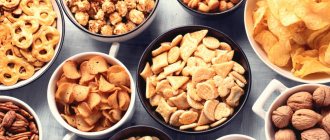Iron (Fe, Ferrum, ferrum) is one of the microelements (in supplements it can be indicated as Iron) that a person receives from food and water. Included in the category of metals that affect metabolic processes, growth, development, reproductive function, blood composition and quality. Iron is distributed throughout the body as follows:
- Up to 70% is in hemoglobin.
- Up to 20-15% - in the form of depots (reserves) in the liver.
- About 5-10% is in myoglobin (responsible for the respiration of muscle tissue).
- A small part (about 0.1%) is composed of the proteins transferrin, hemosiderin and ferritin.
The role of iron in the body
Iron is part of hemoglobin, a component of red blood cells (erythrocytes). These cells carry oxygen and instead take in carbon dioxide and deliver it to the lungs for disposal. Thus, without iron, respiratory processes at the cellular level would simply be impossible.
Other functions of iron in the body:
- Ensuring metabolism. The trace element is involved in the destruction and removal of toxins from the body, the conversion of calories into energy and cholesterol metabolism.
- Protection of the body. Iron is involved in immune processes, activates a person’s own interferon and helps cope with “aggressors” that have entered the body.
- Creation of nerve impulses. Iron not only creates them, but also helps in conducting them along nerve fibers.
- Neutralization of poisons and toxins. This occurs in the liver with the obligatory participation of iron.
The benefits of iron are also invaluable for hair. With its deficiency, hair becomes weak and dull, grows poorly and falls out. This is due to the transport function of iron. When there is little of it, not enough oxygen reaches the hair roots. Deprived of nutrition, they simply cannot grow normally. With prolonged iron deficiency, diffuse alopecia may develop. With it, hair begins to fall out evenly throughout the head.
Biological significance of iron
It is not for nothing that iron is included in the list of vital microelements: there is very little of it in our body, but without it it would be impossible to carry out many functions. Without iron, our cells would be left without oxygen, and the body would have reduced immunity. In addition, iron is part of antioxidant enzymes (catalase and peroxidase), which protect cells from the destructive effects of oxidation products. Without iron, the thyroid gland and central nervous system cannot function fully [1]. A child's body needs iron not only for hematopoiesis, but also for the formation of growing tissues, so children need iron (per 1 kg of weight) more than adults. According to pediatricians [2], in our country, about 50–60% of preschool children and a third of schoolchildren suffer from iron deficiency. One of the main causes of iron deficiency in children is, of course, poor nutrition. Almost two thirds of children eat mainly flour and dairy products, which contain little iron [3]. Meat, legumes and whole grains make up only a small part of their diet. Hence the frequent childhood colds, caused by a weakened immune system that cannot cope with the production of sufficient antibodies.
Iron is an essential biometal that plays an important role in the functioning of cells in many body systems. The biological significance of iron is determined by its ability to reversibly oxidize and reduce. This property ensures the participation of iron in the processes of tissue respiration. In living organisms, iron is an important trace element that catalyzes the processes of oxygen exchange (respiration). The adult human body contains about 3.5 grams of iron (about 0.02%), of which 78% is the main active element of blood hemoglobin, the rest is part of the enzymes of other cells, catalyzing respiration processes in cells. Iron deficiency manifests itself as a disease of the body (chlorosis in plants and anemia in animals and humans). Children's growth and mental development are delayed, adults feel constant fatigue, problems with the skin and mucous membranes begin, the oral cavity, gastrointestinal tract and respiratory tract become vulnerable, which can be one of the causes of dermatitis, eczema, rhinitis, gastritis, etc. [4]. Typically, iron enters enzymes in the form of a complex called heme. In particular, this complex is present in hemoglobin, the most important protein that ensures the transport of oxygen in the blood to all organs of humans and animals. And it is he who colors the blood in its characteristic red color. Iron complexes other than heme are found, for example, in the enzyme methane monooxygenase, which oxidizes methane to methanol, and in the important enzyme ribonucleotide reductase, which is involved in DNA synthesis [5]. Inorganic iron compounds are found in some bacteria and are sometimes used by them to fix air nitrogen.
Iron enters the body of animals and humans with food (the richest sources in it are liver, meat, eggs, legumes, bread, cereals, and beets). Interestingly, spinach was once mistakenly included in this list (due to a typo in the analysis results - the “extra” zero after the decimal point was lost).
The iron content in water of more than 1–2 mg/l significantly worsens its organoleptic properties, giving it an unpleasant astringent taste, and makes the water unsuitable for use, causes allergic reactions in humans, and can cause blood and liver diseases (hemochromatosis). The maximum permissible concentration of iron in water is 0.3 mg/l [6]. An excessive dose of iron (200 mg or higher) can have a toxic effect. An overdose of iron inhibits the body's anti-axial system, so it is not recommended for healthy people to take iron supplements.
The daily human need for iron is as follows: children - from 4 to 18 mg, adult men - 10 mg, adult women - 18 mg, pregnant women in the second half of pregnancy - 33 mg. Women have a slightly higher need than men. As a rule, iron from food is sufficient, but in some special cases (anemia, as well as blood donation), it is necessary to use iron-containing preparations and nutritional supplements (hematogen, ferroplex). The daily requirement for iron is small and easy to meet. However, a baby who is breastfed often becomes iron deficient. The body easily restores the balance between the intake and excretion of iron, and its temporary deficiency is easily replenished from existing reserves [2]. The need for iron increases significantly with anemia caused, for example, by parasitic infestations such as malaria and hookworm, which are very common in tropical countries.
100 g of cooked veal liver contains 12 mg of iron, and 7 mg of beef liver. In some salt deposits, 1 kg of rock salt contains about 450 mg of iron. Rock salt is an effective means of preventing anemia, which affects about 20% of the world's population (data from the World Health Organization) [3].
There is a lot of iron in plum juice, dried apricots, raisins, nuts, pumpkin and sunflower seeds. 30 g of sprouted wheat contains 3 mg of iron. Black bread, bran, and wholemeal bread are also rich in it. It is assumed that the body receives iron from meat and bread by only 25–40%, and from fruits and vegetables by 80%, which is facilitated by the presence of vitamin C. There is a relatively high amount of iron in sorrel, parsley, dill, strawberries, and apples. , tomatoes, cauliflower, dogwood, peaches and other fruits.
First of all, products of animal origin are characterized by a high content of iron in an accessible form. The approximate amount of iron in 100 g of product is as follows: veal - 2.9 mg, rabbit meat - 3.3 mg, pork - 1.4 mg, lamb - 2 mg, ham - 2.6 mg, amateur sausage - 1.7 mg , semi-smoked sausage - 2.7 mg, tea sausage - 1.8 mg, sausages - 1.8 mg, chicken - 1.6 mg. Bread and bakery products can also be classified as products that help eliminate iron deficiency conditions: rye bread - 3.9 mg, wheat bread - 1.9 mg, loaf of 1st grade flour - 2 mg, crackers - 3.3 mg, pasta - 1.6 mg. Fish contains much less iron: cod - 0.7 mg, stellate sturgeon - 0.6 mg, salted Atlantic herring - 1 mg, pike perch - 0.05 mg. Milk and dairy products also contain a small amount of iron: milk, curdled milk, kefir - 0.1 mg, condensed milk with sugar - 0.2 mg, dry milk - 0.5 mg, sour cream - 0.2 mg, cheeses - 1, 1 mg, full-fat cottage cheese and low-fat cottage cheese - 0.5 mg and 0.3 mg of iron, respectively.
Most plant foods contain relatively small amounts of iron. For example, 100 g of carrots contain 0.7 mg of iron, tomatoes - 0.9 mg, grapes - 0.6 mg, cabbage - 0.6 mg, plums - 0.5 mg, onions and green onions - 0. 8 mg and 1 mg respectively.
However, some products of plant origin contain quite a decent amount of iron: apples - 2.2 mg, pears - 2.3 mg, spinach - 3.5 mg, hazelnuts - 3 mg, corn - 2.7 mg, peas - 7 .0 mg, beans - 5.9 mg. 100 g of buckwheat contains 6.7 mg of iron, millet groats - 2.7 mg, semolina and rice - 1 mg [9–11].
Apples and pomegranate contain a lot of iron; they are rightly considered a good helper for anemia in children, adults and especially pregnant women. Of course, there is much less iron in apples than in liver and meat, but iron from apples has high biological absorption, that is, almost everything is used by the body. In addition, there is a folk remedy to increase the content of useful iron in apples: just stick two or three clean nails into the apple for a couple of days. During this time, under the influence of acids that are in apples, they will oxidize [1]. The juice of the best cultivated varieties of Azerbaijani pomegranate contains (0.3–0.7 mg/100g of iron.
Literature:
1. https://www.abcslim.ru/articles/477/zhelezo/
2. https://www.babyblog.ru/user/Blondee/246477
3. Emanuel N. M., Zaikova G. E. Chemistry and food. M.: Knowledge, 1986.
4. Belikov V. G. Pharmaceutical chemistry. In 2 hours. Part 1. General pharmaceutical chemistry: Textbook. for pharmaceutical Inst. and fak. honey. Inst. - M.: Higher School, 1993, 432 p.
5. https://nauka.relis.ru/08/0412/08412112.htm
6. Volkov V.N., Lobov B.I. Determination of total iron content in natural waters // Chemistry at school. - 2007. - No. 8, - pp. 70–74.
7. https://www.zdravplus.ru/ru/statiy/microelement-vitamini/146-rol-fe
Iron norm
To maintain health, men need about 10 mg of iron per day, and women need 15-20 mg. During pregnancy you need even more - 20 mg. The increased dose for women is due to the fact that the level of this element in their body is lower. This is also explained by differences in the hormonal system and monthly iron losses during menstruation.
If we consider iron standards in blood tests, the average values are:
- 9-30 µmol/l – for women with a hemoglobin level of 120-150 g/l and 110-140 g/l during pregnancy;
- 12-31 µmol/l – for men with a hemoglobin level of 130-170 g/l.

Increased iron requirement
An increased need for iron is inherent in the following groups of people:
• Women during the period after menstruation. Blood loss, even if small, requires compensation for the hemoglobin content in the blood. • Pregnant and lactating women. During pregnancy, a significant consumption of iron is carried out to build the fetal body, and nursing mothers spend their iron on feeding the child (it passes into breast milk). Literally every second pregnant woman shows signs of iron deficiency, which indicates a significant increase in the need for this element in expectant mothers. • After injuries, blood loss, major surgical operations.
Iron is a very valuable element. In this regard, the body has learned to reuse it. During the natural destruction of old red blood cells, special carrier proteins capture the released iron and transport it to the hematopoietic organs, where it is used again.
However, the loss of the mineral is still quite large, so many people require additional iron supplementation in everyday life. If you have an increased need for this element, you should start taking food supplements containing this element.
Symptoms of iron excess and deficiency
To accurately determine the level of the element, a biochemical blood test is prescribed. Excess iron in the body is observed less often than deficiency, but also negatively affects health. This condition is called hemochromatosis. This is indicated by pain in the right hypochondrium and redness of the skin.
Low iron levels are more common than high iron levels. The microelement retains oxygen in red blood cells, so when it is deficient, the body begins to experience hypoxia (oxygen deficiency). In the most severe cases, iron deficiency anemia (popularly known as anemia) may develop. It is especially common in infants and pregnant women.
Symptoms of iron deficiency in the body:
- fatigue and muscle weakness;
- dry hair and brittle nails;
- pale skin (also indicates a lack of hemoglobin);
- tinnitus, headache and dizziness;
- rapid heartbeat and shortness of breath;
- bluish tint to lips and nails.
Even with a deficiency, you may notice difficulties and discomfort when swallowing. Others note that their taste preferences changed in strange ways, for example, they wanted to chew paper or chalk.
In some cases, with iron deficiency, a person feels a loss of strength. Even after sleep he feels tired, and the slightest exertion causes severe shortness of breath. Another person may experience constant colds, which is caused by a decrease in immunity.
On this topic:
How to strengthen the immune system in spring and why it is really necessary (the simplest methods and tips)
Our clinics in St. Petersburg
Medical center on Pionerskaya Polikarpov Alley 6k2 Primorsky district
- Pionerskaya
- Specific
- Commandant's
Medical center South-West Marshal Zhukov Ave. 28k2 Kirovsky district
- Avtovo
- Avenue of Veterans
- Leninsky Prospekt
Medical center in Devyatkino Okhtinskaya alley 18 Vsevolozhsk district
- Devyatkino
- Civil Prospect
- Academic
For detailed information and to make an appointment, you can call +7 (812) 640-55-25
Make an appointment
Iron plays a very important role in the human body. It performs the function of oxygen transfer, takes part in oxidative processes, enzymatic reactions, providing immune functions, and cholesterol metabolism. In addition to red blood cells, iron is also found in brain cells.
What foods contain iron?
To get the required amount of iron, you need to eat foods that contain it. For humans, the most valuable iron is heme iron, which contains myoglobin and is present in foods of animal origin. The following products contain it:
- beef liver and other offal;
- beef;
- fish;
- turkey;
- seafood.
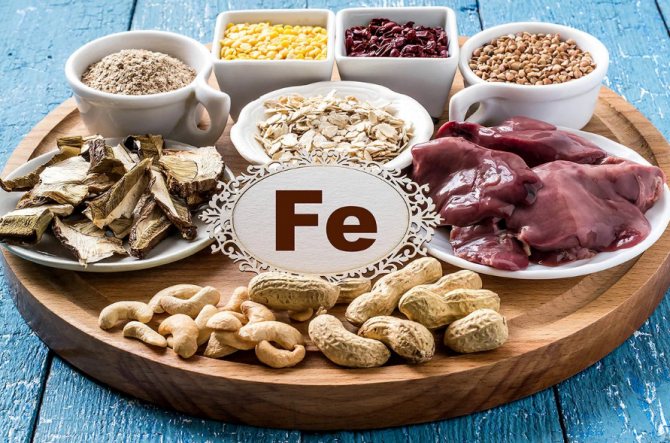
Another microelement is obtained from beets, buckwheat, pomegranates and apples. They contain non-heme iron, which is absorbed much worse than heme iron. The leader in content per 100 g here is buckwheat. Moreover, for better absorption it should not be boiled, but steamed overnight by pouring boiling water over it. It is also useful to additionally include foods with vitamin C in your diet, as it helps iron to be absorbed more efficiently.
On this topic:
Benefits of vitamin C for the body | Does it really help against colds and why is it needed in sports?
Absorption of iron from food
Even under ideal conditions, no more than 10% of ingested iron is absorbed from food. There are a number of factors that further reduce this figure. At the same time, there are certain factors that increase the absorption of the mineral. What determines the degree of iron absorption?
1. Source. Animal products contain iron in an easy-to-absorb divalent form. In plants it is trivalent. In order to assimilate it and put it to use, the body must expend energy to restore the mineral to its divalent form. That is why most of the iron supplied with buckwheat or pomegranate juice does not benefit the body. 2. Digestive health. With reduced acidity of gastric juice, gastritis and enteritis, iron absorption is significantly reduced. It is optimal for a healthy digestive tract. 3. Food composition.
4. Iron is better absorbed in the presence of vitamin C, organic acids of vegetables and fruits, amino acids lysine and histidine, as well as some carbohydrates such as fructose and sorbitol. Thus, meat and liver should always be combined with a fresh vegetable salad.
5. Iron is less easily absorbed in the presence of tannins, dietary fiber (they “collect” iron molecules and remove them from the body), phytin, and oxalic acid. This means that if you are looking to get more iron, it is recommended to avoid eating foods such as legumes, sorrel, spinach, and bran too often. Calcium is a fairly strong antagonist of iron; products containing it (mainly dairy) inhibit its absorption.
Reduced iron content.
At the moment, there are many factors that can cause low iron levels in the blood. The most likely causes of low iron content are insufficient intake from food, impaired absorption in the stomach and metabolic disorders. There are situations with absolute or relative iron deficiency. Such cases include lactation, pregnancy, periods of development and growth. Another cause of iron deficiency can be chronic or acute blood loss.
Insufficient iron content manifests itself as:
- slowdown in physical and mental development;
- iron deficiency anemia;
- inappropriate behavior in children;
- weakness, fatigue, dizziness and headaches;
- decreased concentration and memory;
- brittle nails;
- perversions of taste;
- immunosuppression and, as a consequence, frequent morbidity.
Calcium promotes the absorption of iron, while vitamin E and zinc, on the contrary, reduce the body’s ability to absorb iron.
The most famous iron preparations and the best dietary supplements
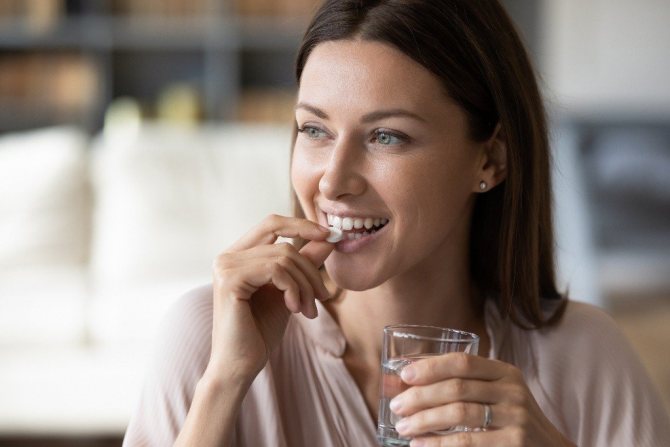
A reduced level of hemoglobin, which contains iron, impairs the transfer of oxygen to organs and tissues, and oxygen starvation may even occur. This condition is called anemia.
To increase the amount of ferrum and raise hemoglobin levels, a special group of iron preparations is used.
The most famous antianemic drugs:
- Gyno-Tardiferon;
- Heferol;
- Ferrofol;
- Tardiferon;
- Ferrum Lek.
Ferrum is also included in various dietary supplements. One dietary supplement may contain a complex of vitamins and beneficial elements. Iron is included in their composition to increase the level of hemoglobin in the blood.
The best dietary supplements with iron:
- FerroBio;
- Doppelhertz Active from A to Zinc.
Before choosing any drug or dietary supplement containing iron, consult your doctor and do not combine drugs without permission, as this may be unsafe for your health.
than 200 world-renowned scientists have urged everyone to take vitamin D. Find out from our latest material what the benefits of the “sun vitamin” are and does it help in the prevention and treatment of coronavirus?
Few people know about the 9 main beneficial properties of zinc . However, this element is important for immunity, bone and intestinal health. Read our article for more information about zinc.
Find out more about health at apteka24.ua .
This editorial material has been verified for accuracy by Ekaterina Yuryevna Krasnova , a physician at the Medical Plaza Medical Center .
Natural source of Iron Doromarin
If you do not want your child to suffer from iron deficiency, then you should not hesitate, but you need to start drinking Doromarin. It is completely natural and can be used both for the treatment and prevention of various diseases. Doromarine will provide your child with a strong immune system, protecting him from the negative consequences caused by viral infections and harmful bacteria.
Doromarin will help improve children's performance at school and normalize mental and physical activity. This product will relieve excessive fatigue from light exertion, and will also supply the body with a whole complex of vitamins, the deficiency of which can arise, at a minimum, due to a disrupted diet. Doromarine is based on the daily requirement of iron (Fe) that a growing body needs.
Iron-containing proteins of the body and their functions
| Protein | Localization | Function() |
| Hemoglobin | Red blood cells | Transport of oxygen to tissues |
| Myoglobin | Muscles | Oxygen accumulation |
| Iron-containing proteins | Most mitochondria (cytochromes, etc.) of cells | Energy production in cells (ATP) |
| Transferrin | Blood | Iron transportation |
| Ferritin/hemosiderin | Iron-containing enzymes (catalases, peroxidases, xanthine oxidases) | Iron depot |
| Liver, spleen, bone marrow | Everywhere | Various functions in metabolism |
Red blood cells and iron cycling
It is immediately necessary to explain that red blood cells are the same formed elements as lymphocytes, leukocytes and others. Red blood cells live in the blood plasma for 120-130 days and die. The place of formation of red blood cells is the red bone marrow, ribs, spine. Hemoglobin, in turn, is an integral part of the red blood cell, which contains iron atoms in its composition. Every day, about 3 billion red blood cells die and new ones are formed. The question arises: where does the iron go from dead red blood cells? Of course, some of it is excreted from the body, but most of it is redistributed. After all, the body is a unique system that always tries to save nutrients and other components, following the path of least resistance. How to build three billion red blood cells in a day from scratch? The liver, for example, re-assembles and reassembles blood plasma proteins - thereby causing protein circulation in the body. And there are many such cycles in the body, not only protein. The situation is similar with iron.
Solution
Taking Liquid Chlorophyll together with Iron Chelate will improve the absorption and performance of these two products. If you have parasites (the test needs to be done by blood, feces does not show the real picture), be sure to pay attention to Colloidal Silver and the Antiparasitic Set, which needs to be supplemented with other products. For Dysbacteriosis, Bifidophilus is mandatory; for gastrointestinal problems, a rehabilitation course is mandatory.
Benefits of Chlorophyll
Chlorophyll is energy, building material, and hematopoietic functions. Chlorophyll is the basis of life in both the plant and animal kingdoms. For healthy blood, chlorophyll is absolutely necessary in sufficient quantities. And considering that it is involved not only in the creation of hemoglobin and is spent on various needs of the body, it is very difficult to replenish it only from greens. The issue of the quality of modern products, the content of useful substances we need in them, is a separate topic. This is especially true for greens (not wild plants). So, a ready-made chlorophyll extract in liquid (easily digestible) form comes to the rescue. Photosynthesis and protein biosynthesis are the two main processes in the formation of the necessary organic raw materials for the construction and functioning of all organisms on our planet. From time to time, everyone needs to do a general blood test to monitor the situation and see the condition of their body.
